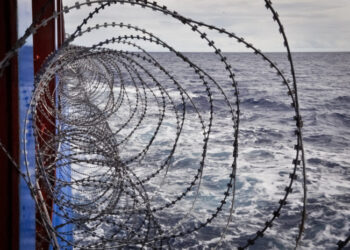For reporting period 24 April – 01 May 2013
 NATO Shipping Centre has issued itsWeekly Piracy Update for periodfor 25 April -1 May 2013. During this reporting period, there were no significant events to report.NSC advises the following:
NATO Shipping Centre has issued itsWeekly Piracy Update for periodfor 25 April -1 May 2013. During this reporting period, there were no significant events to report.NSC advises the following:
Masters are advised to remain vigilant at all times in transitorat anchorage and fully implement protection measures, as set down in BMP4, across the entire High Risk Area (HRA).
Sailing yachts should avoid transiting the HRA. Past activity has shown that pirates will attack both large and small yachts passing their way. Despite the fact that attacks on merchant vessels appear to have decreased, the possibility of attacks and the successful pirating of sailing vessels remains likely due to their vulnerability and the reduction of revenue sources from pirated merchant vessels.
There have been a number of incidents reported to counter-piracy organisations in the HRA involving small craft approaches to merchant vessels. Although these incidents may appear to be piracy related, the majority actually are not and have been assessed as non-piracy related activity common to the pattern of life in the area. This can include fishing, small vessel trade, smuggling and other local traffic.
Fishing vessels may approach a merchant ship to maximize fishing opportunities or to safeguard fishing nets and fishermen may carry small arms. It is not uncommon for fishing vessels to follow merchant and large vessels in order to capitalise on the often increased numbers of fish in the resultant wake. Please note that, if the NATO Shipping Centre assesses an approach or incident to be piracy-related, we will issue relevant warnings.
Weather:
With the onset of the transition period following the North East Monsoon, sea states have become increasingly conducive to piracy operations.
Piracy Threat:
The threat of piracy against merchant shipping continues throughout the entire HRA. Successful disruptions by naval forces over the past few months, in conjunction with masters’ adherence and implementation of BMP4, have significantly reduced the pirates’ ability to capture vessels. However, pirates are able to act far off the coast of Somalia and are likely in search of vessels of opportunity.
Pirate Tactics:
Pirate Attack Groups (PAGs) have made “soft-approaches” on merchant ships transiting the HRA. A skiff will often approach a vessel to probe the reactivity of its embarked security team, if present. If they elicit no response, the pirates may then proceed with an attack, sometimes accompanied by a second skiff. This practice seems designed to allow pirates to avoid needless expenditures of ammunition and personal risk without a significant probability of success.
Continued Vigilance and the use of BMP:
It is imperative that merchant vessels remain vigilant at all times in transit and/or at anchorage and fully implement protection measures set down in BMP4 across the whole High Risk Area (HRA) as it can make the critical difference of being approached, attacked, or pirated. NSC would like to remind masters that BMP4 highly recommends maintaining best possible vessel speed when transiting the HRA to deter pirate boardings.
Registration & Incident Reporting:
As per Section 5 of BMP4, early registration with MSCHOA before entering the HRA and initial and regular reporting to UKMTO are highly recommended to ensure military authorities are aware of a vessel’s passage and vulnerabilities.
It has been observed that some Masters are choosing to phone their Company Security Officer (CSO) first in the event of a piracy incident. However, one of the fundamental requirements of BMP4 is that UKMTO is the primary point of contact for merchant vessels during piracy incidents in the HRA. This aims to avoid unnecessary delay and prevent inaccurate or incomplete information from reaching military commanders. CSOs should ensure their ships’ security plans reinforce the BMP4 recommendation that UKMTO be immediately telephoned at +971 50 55 23215 in the event of any piracy activity. UKMTO will then make it a priority to contact the CSO with any information received whilst ensuring the relevant information reaches the military commanders without delay. Masters should provide as much accurate information as possible. This will ensure the incident can be fully assessed and information is quickly provided to other ships in the area for their awareness and vigilance.
Masters should provide as much information as possible about the incident. If Masters are able to take pictures and/or video of the suspicious activity safely, please provide these via email to UKMTO at [email protected], NATO Shipping Centre (NSC) at [email protected] or MSCHOA at [email protected]. This information will be used by Counter Piracy forces. Pictures supplied from an attack on a merchant vessel have previously led to the rapid release of a pirated dhow.
Source:NATO Shipping Centre





























































